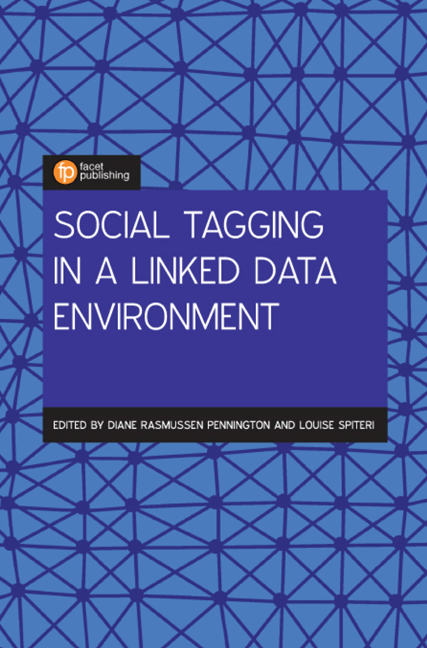Book contents
- Frontmatter
- Contents
- List of figures and tables
- Contributors
- 1 Introduction: the continuing evolution of social tagging
- 2 Tagging the semantic web: combining Web 2.0 and Web 3.0
- 3 Social tags for linked data with Resource Description Framework (RDF)
- 4 Social tagging and public policy
- 5 Hashtags and library discovery systems
- 6 Social information discoverability in Facebook groups: the need for linked data strategies
- 7 #FandomCommunication: how online fandom utilises tagging and folksonomy
- 8 Keys to their own voices: social tags for a dementia ontology as a human right
- 9 Social tagging and the enterprise: an analysis of social tagging in the workplace
- 10 Use and effectiveness of social tagging recommender systems
- Index
10 - Use and effectiveness of social tagging recommender systems
Published online by Cambridge University Press: 01 June 2019
- Frontmatter
- Contents
- List of figures and tables
- Contributors
- 1 Introduction: the continuing evolution of social tagging
- 2 Tagging the semantic web: combining Web 2.0 and Web 3.0
- 3 Social tags for linked data with Resource Description Framework (RDF)
- 4 Social tagging and public policy
- 5 Hashtags and library discovery systems
- 6 Social information discoverability in Facebook groups: the need for linked data strategies
- 7 #FandomCommunication: how online fandom utilises tagging and folksonomy
- 8 Keys to their own voices: social tags for a dementia ontology as a human right
- 9 Social tagging and the enterprise: an analysis of social tagging in the workplace
- 10 Use and effectiveness of social tagging recommender systems
- Index
Summary
Introduction
The internet is a unique medium, innovating constantly and, in turn, being shaped in accordance with the technologies, interests and needs of the time. It started with simple content, requiring facility of straightforward search; thereafter it turned into a complex network (social network) with complex content (social content) demanding complex search processes (social search). We have seen the transition from the static web to the dynamic web to the intelligent web. Social networking emerged with the inception of Web 2.0 and has expanded dynamically since 2003, because of both its enormous appeal to users and innovations in technology. Social tagging was immediately accepted by savvy users and gained recognition as an important feature of social networking sites and social bookmarking sites. Additionally, social tagging is a possible solution to improved searching of networked resources and enables users to use tag descriptors to label web content for the purpose of personal and shared organization of information resources (Trant, 2009). This chapter will explore the different types of traditional recommender systems, as well as those for social tagging specifically, their use and effectiveness.
History of traditional recommender systems
Recommender systems emerged during the mid-1990s (Herlocker and Konstan, 2001; Shardanand and Maes, 1995) and were collectively defined as the supporting systems that help users find information, products, or services by aggregating and analysing suggestions from other users (Frias-Martinez et al., 2006; Kim et al., 2010; Park et al., 2012). The term ‘recommender’ can refer also to the degree of information filtering to produce topics or content that users are interested in (O'Connor et al., 2001). A recommender system analyses user preferences, interests and behaviours and generates the potential information, service, or products needed by users (Li, Hsu and Lee, 2012). A recommender system is a technology where items such as products, movies, events and articles are recommended for users (Kordík, 2016). Burke defines a recommender system as one ‘that produces individualized recommendations as output or has the effect of guiding the user in a personalized way to interesting or useful objects in a large space of possible options’ (Burke, 2002a, 331).
- Type
- Chapter
- Information
- Social Tagging for Linking Data Across Environments , pp. 189 - 208Publisher: FacetPrint publication year: 2018



